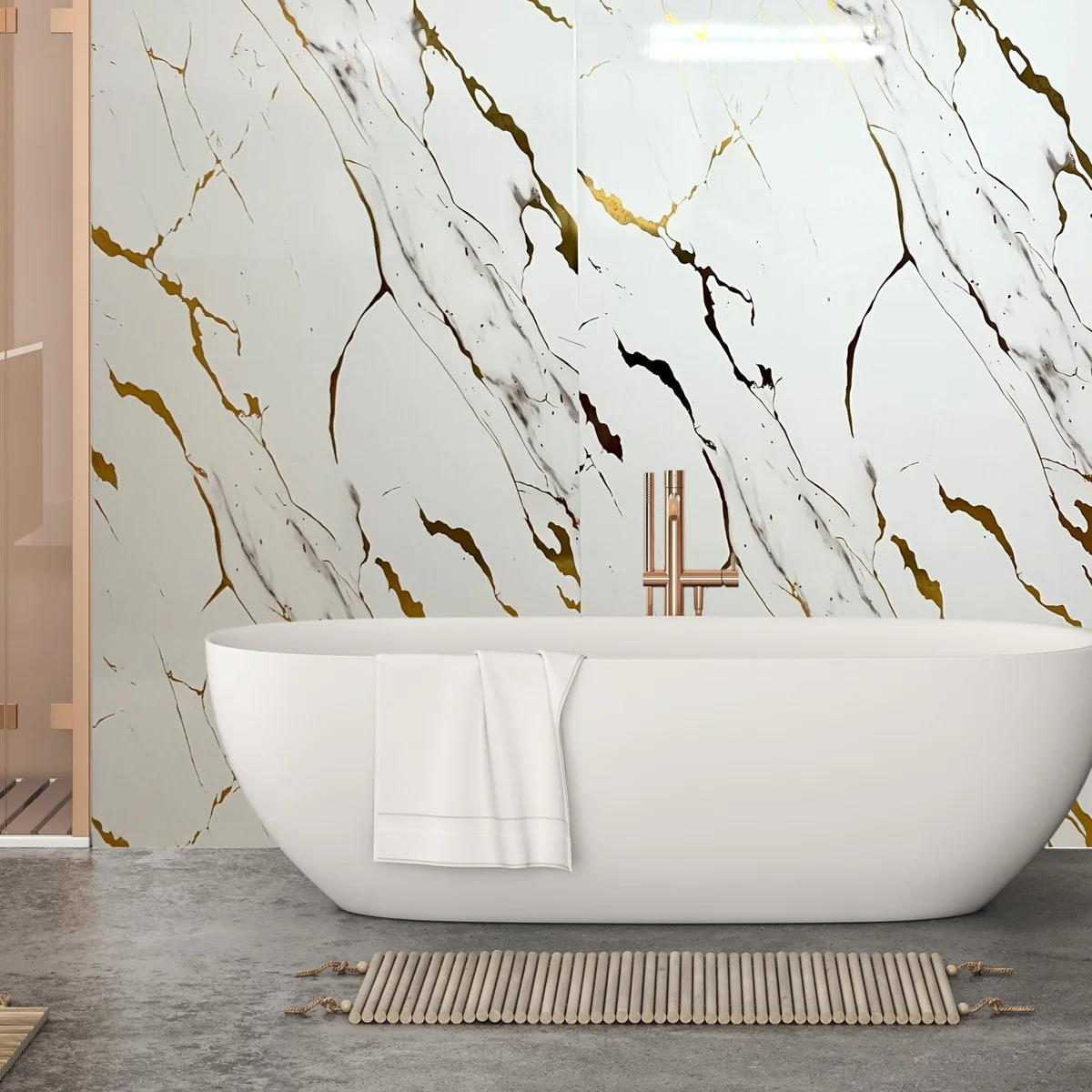Taj Mahal Quartzite: The Subtle Power of Natural Stone in Modern Design
Soft tones and strong surfaces. That’s the quiet appeal of natural stone. Taj Mahal quartzite in the UK stands out because it doesn’t need to scream luxury. It just is.
Known for its creamy beige colour and delicate grey veins, it slips into both traditional and modern spaces without disruption. Architects, designers, and homeowners looking for beautiful quartzite countertops or custom accent walls often land here—for good reason.
Stone with Presence, Not Pretense
The surface has depth. There’s a warmth to it. Taj Mahal quartzite slabs show off faint waves and cloudy streaks that resemble marble. But beneath that softness is something tougher.
Quartzite forms when sandstone transforms under heat and pressure. It starts in the earth, often in Brazil, and finishes in kitchens, bathrooms, offices, and commercial properties. What makes it work is balance. It has the look of marble, the strength of granite, and the polish of quartz.
Taj Mahal quartzite’s durable traits come from its natural resistance to heat, scratching, and moisture. That’s why it’s popular in areas where stone works hard: worktops, kitchen islands, bar backs, and bathroom vanities. It’s also chosen for splashbacks, floor tiles, and large slab walls that need presence without pattern overload.
Designed for Living
Some stones look better from a distance. Mahal quartzite holds up under pressure—and under daily use. You don’t need to tiptoe around it.
Hot pans won’t scar it. Knives won’t cut it. Spills won’t sink into it. That’s part of the appeal. Homeowners like knowing their beautiful quartzite countertops won’t demand babysitting. They want durability without giving up beauty.
The colour scheme plays into this. Pale beige, off-white, and hints of taupe offer a neutral base. Soft grey veins give the surface movement. It’s not flat. It breathes. Match it with light cabinetry for a calm, Scandinavian feel. Or go dark—walnut, navy, charcoal—for contrast.
Taj mahal quartzite fits both.
Clean Cuts and Custom Details
Edges matter. So do cut outs. Not every surface can handle modern sink styles or integrated hobs. Taj mahal quartzite slabs do.
Fabricators love working with this material because of its density and flexibility. It doesn’t crumble under detailed cuts. That opens up options—drop-in sinks, under-mounts, waterfall edges, custom drain grooves. Even bookmatched accent walls with mirrored veins are on the table.
Installers get clean lines. Designers get seamless finishes. Clients get a stone that looks good from every angle.
Commercial-Grade Looks with Home-Level Warmth
Retail, hospitality, office—taj mahal quartzite works there too. Big spaces need surfaces that hold their own. Bold floors. Wide counters. Accent walls that don’t get lost in the room.
In commercial properties, the polished finish of quartzite reflects light beautifully. The surface stays cool under foot. And it resists stains from foot traffic, drinks, cleaning chemicals, and time.
Interior designers working on hotels, bars, or showrooms often choose it for its subtle elegance. It doesn’t distract. It complements. That matters when lighting, furniture, and branding also want attention.
How It Compares to Marble, Granite, and Quartz
Some call it a marble alternative. Others see it as granite’s quieter cousin. But taj mahal quartzite stands alone.
It gives off that marble vibe—soft colours, natural elegance—but without the fuss. It’s less porous. It handles wear better. And unlike granite, it doesn’t always carry bold flecks or heavy patterns. Its look is lighter, more streamlined.
Compared to quartz, it’s real. No pigments, no resins. It’s dug out of the earth, not poured into a mold. The result? A surface that feels solid and grounded.
Cost sits somewhere between high-end quartz and imported marble. You pay for quality, longevity, and natural appeal. And you get a slab that’s one of a kind—no repeats, no prints.
More than a Pretty Surface
The polished finish reflects light. But there’s more to it. Taj mahal quartzite durable qualities make it a smart choice for surfaces that get used and seen.
Think kitchens where cooking happens. Bathrooms with steam. Offices with meetings. Showrooms with guests. Stone that performs quietly in the background—without losing its shape or style.
Its neutral colour range also makes it future-proof. Trends change. Styles evolve. Taj stays.
Final Thoughts
Hard to ignore. Easy to live with. Taj mahal quartzite uk continues to attract designers and renovators who want surfaces with softness and strength. The stone is cut for modern use but shaped by nature—always unique, always refined.
Few materials offer the same combination of appearance, toughness, and flexibility. Taj mahal quartzite slabs deliver it in a way that feels natural, understated, and lasting.
Frequently Asked Questions
What makes taj mahal quartzite an elegant natural stone?
Its soft beige tones and subtle grey patterns create a refined, natural look that works in both modern and classic interiors.
Can taj mahal quartzite be used to create beautiful quartzite countertops?
Yes, the stone’s durability and appearance make it a top choice for creating beautiful quartzite countertops in kitchens and bathrooms.
Why are the dramatic veins of taj mahal quartzite so popular?
They add visual depth and movement to the stone, giving each slab a unique, high-end appearance.
Is taj mahal quartzite suitable for both residential and commercial spaces?
Yes, it performs well under heavy use while maintaining a polished, luxurious look.




